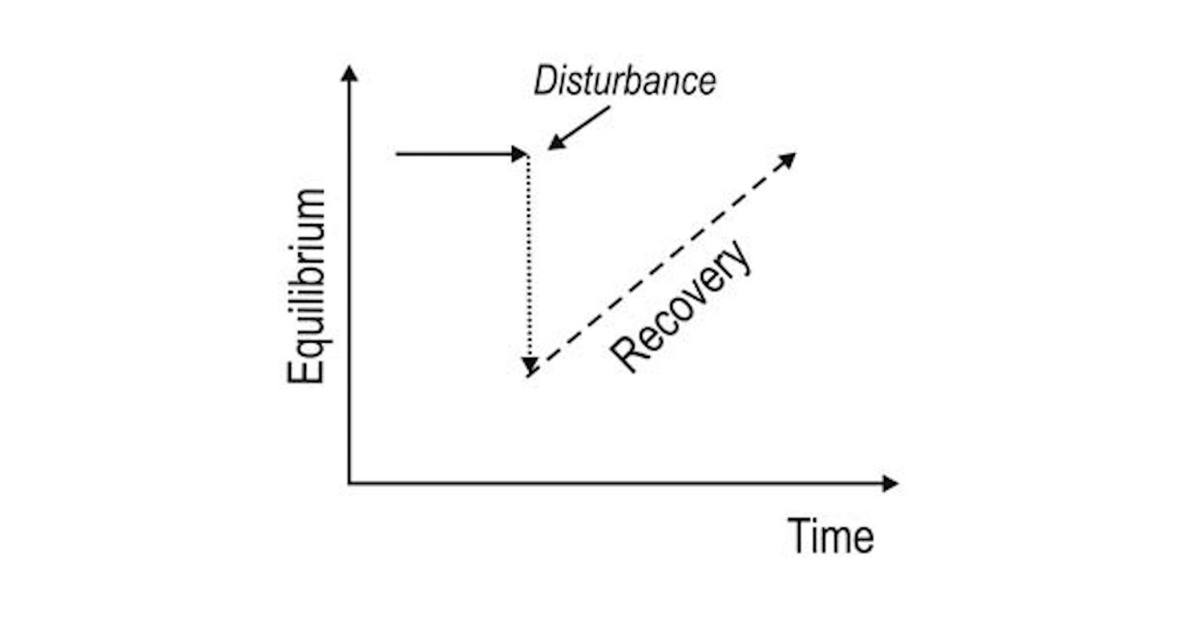Everything you need to know about Resilience Engineering – The What, Why, When, and How.

𝗙𝗿𝗲𝗾𝘂𝗲𝗻𝘁𝗹𝘆 𝗔𝘀𝗸𝗲𝗱 𝗤𝘂𝗲𝘀𝘁𝗶𝗼𝗻𝘀
𝗪𝗵𝗮𝘁 𝗶𝘀 𝗥𝗲𝘀𝗶𝗹𝗶𝗲𝗻𝗰𝗲 𝗘𝗻𝗴𝗶𝗻𝗲𝗲𝗿𝗶𝗻𝗴?
Resiliency Engineering is the practice of designing and building systems to achieve resiliency—ensuring they can handle failures, adapt to disruptions, and recover gracefully without major downtime.𝗜𝘀 𝗥𝗼𝗯𝘂𝘀𝘁𝗻𝗲𝘀𝘀 𝘁𝗵𝗲 𝘀𝗮𝗺𝗲 𝗮𝘀 𝗥𝗲𝘀𝗶𝗹𝗶𝗲𝗻𝗰𝘆?
No, robustness and resiliency are related but not the same. Robustness refers to a system's ability to continue functioning under stress or extreme conditions without failing. It's about withstanding challenges. Resiliency, on the other hand, focuses on how well a system can recover from failures or adapt to changes. While a robust system can handle stress, a resilient system can bounce back quickly after problems occur.𝗛𝗼𝘄 𝗶𝘀 𝗰𝗵𝗮𝗼𝘀 𝗲𝗻𝗴𝗶𝗻𝗲𝗲𝗿𝗶𝗻𝗴 𝗱𝗶𝗳𝗳𝗲𝗿𝗲𝗻𝘁 𝗳𝗿𝗼𝗺 𝗿𝗲𝘀𝗶𝗹𝗶𝗲𝗻𝗰𝗲 𝗲𝗻𝗴𝗶𝗻𝗲𝗲𝗿𝗶𝗻𝗴?
Chaos engineering focuses on intentionally breaking systems in a controlled way to uncover weaknesses before real failures happen. Resilience engineering is broader, aiming to design, build, and maintain systems that can withstand and recover from failures. Chaos engineering is a testing approach, while resilience engineering is a system-wide strategy for reliability.𝗪𝗵𝗮𝘁 𝗶𝘀 𝘁𝗵𝗲 𝗶𝗱𝗲𝗮𝗹 𝗮𝗽𝗽𝗿𝗼𝗮𝗰𝗵 𝘁𝗼 𝗿𝗲𝘀𝗶𝗹𝗶𝗲𝗻𝗰𝗲 𝘁𝗲𝘀𝘁𝗶𝗻𝗴?
To build effective resilience tests, teams need to understand the system’s architecture, design, and infrastructure. Key strategies include: conducting failure mode analysis, validating application and data resiliency, configuring health probes, conducting fault injection tests for each application, checking network availability, and performing critical tests in production.𝗛𝗼𝘄 𝗱𝗼 𝗿𝗲𝘀𝗶𝗹𝗶𝗲𝗻𝗰𝗲 𝘀𝘁𝗿𝗮𝘁𝗲𝗴𝗶𝗲𝘀 𝗵𝗲𝗹𝗽 𝗰𝗼𝗺𝗯𝗮𝘁 𝘀𝗼𝗺𝗲 𝗼𝗳 𝘁𝗵𝗲 𝘀𝘆𝘀𝘁𝗲𝗺 𝗳𝗮𝗶𝗹𝘂𝗿𝗲𝘀?
Resilience strategies help systems withstand failures by incorporating fault tolerance, graceful degradation, and automated recovery mechanisms. Techniques like circuit breakers, retry policies, and distributed redundancy prevent cascading failures and ensure continued operation. By leveraging observability, self-healing, and chaos engineering, systems proactively detect, mitigate, and recover from failures with minimal impact.𝗛𝗼𝘄 𝘁𝗼 𝘁𝗲𝘀𝘁 𝘁𝗵𝗲 𝗿𝗲𝘀𝗶𝗹𝗶𝗲𝗻𝗰𝘆 𝗼𝗳 𝘀𝘆𝘀𝘁𝗲𝗺𝘀 𝗮𝗰𝗿𝗼𝘀𝘀 𝘁𝗵𝗲 𝗲𝗻𝘁𝗲𝗿𝗽𝗿𝗶𝘀𝗲?
Test system resiliency by simulating failures using chaos engineering and fault injection. Perform load testing, disaster recovery drills, and failover tests to check stability. Use monitoring, alerts, and automated recovery to detect and fix issues quickly.𝗛𝗼𝘄 𝘁𝗼 𝗟𝗲𝘃𝗲𝗿𝗮𝗴𝗲 𝗥𝗲𝘀𝗶𝗹𝗶𝗲𝗻𝗰𝗲 𝗘𝗻𝗴𝗶𝗻𝗲𝗲𝗿𝗶𝗻𝗴 𝗶𝗻 𝗗𝗮𝗶𝗹𝘆 𝗣𝗿𝗮𝗰𝘁𝗶𝗰𝗲?
Leverage resilience engineering in daily practice by designing fault-tolerant systems with redundancy and failover mechanisms. Regularly test failures using chaos engineering and implement automated recovery strategies like retries and self-healing. Monitor systems with observability tools to detect issues early and ensure continuous improvement.𝗕𝘂𝘀𝗶𝗻𝗲𝘀𝘀 𝗖𝗼𝗻𝘁𝗶𝗻𝘂𝗶𝘁𝘆, 𝗗𝗶𝘀𝗮𝘀𝘁𝗲𝗿 𝗥𝗲𝗰𝗼𝘃𝗲𝗿𝘆, 𝗮𝗻𝗱 𝗥𝗲𝘀𝗶𝗹𝗶𝗲𝗻𝗰𝗲 𝗘𝗻𝗴𝗶𝗻𝗲𝗲𝗿𝗶𝗻𝗴 - 𝗪𝗵𝗮𝘁’𝘀 𝘁𝗵𝗲 𝗱𝗶𝗳𝗳𝗲𝗿𝗲𝗻𝗰𝗲?
Business Continuity ensures operations run smoothly during disruptions. Disaster Recovery focuses on restoring systems after failures. Resilience Engineering designs systems to withstand and recover from failures automatically.𝗛𝗼𝘄 𝗱𝗼 𝘆𝗼𝘂 𝗺𝗲𝗮𝘀𝘂𝗿𝗲 𝘁𝗵𝗲 𝗿𝗲𝘀𝗶𝗹𝗶𝗲𝗻𝗰𝘆 𝗼𝗳 𝗮 𝘀𝘆𝘀𝘁𝗲𝗺?
To measure a system's resilience, look at how quickly it recovers from failures and how often failures happen. We also check how well it handles errors and if it has backup systems in place. Monitoring system performance and stability during issues helps track resilience. We can also simulate failures to test if the system can recover smoothly.𝗜𝘀𝗻'𝘁 𝗿𝗲𝘀𝗶𝗹𝗶𝗲𝗻𝗰𝘆 𝗲𝗻𝗴𝗶𝗻𝗲𝗲𝗿𝗶𝗻𝗴 𝗮𝗻 𝗼𝗿𝗴𝗮𝗻𝗶𝘇𝗮𝘁𝗶𝗼𝗻𝗮𝗹 𝗺𝗮𝘁𝘁𝗲𝗿?
Resilience engineering is both technical and organizational. It’s not just about building systems that can recover from failures, but also about creating a culture that supports reliability. Teams must work together to make sure systems can handle problems when they happen.𝗪𝗵𝗶𝗰𝗵 𝗳𝗿𝗮𝗺𝗲𝘄𝗼𝗿𝗸 𝗰𝗮𝗻 𝗵𝗲𝗹𝗽 𝗶𝗺𝗽𝗹𝗲𝗺𝗲𝗻𝘁 𝗿𝗲𝘀𝗶𝗹𝗶𝗲𝗻𝗰𝗲 𝗲𝗻𝗴𝗶𝗻𝗲𝗲𝗿𝗶𝗻𝗴?
Frameworks like Hystrix and Resilience4j are popular choices for implementing resilience engineering. These frameworks offer tools like circuit breakers, retry mechanisms, and fault tolerance to ensure that systems continue functioning despite failures. Chaos Monkey, part of the Netflix, helps by simulating real-world failures and testing system resilience under adverse conditions. Kubernetes and Istio also support resilience by providing self-healing capabilities and traffic management for distributed systems, enabling better fault isolation and recovery. These frameworks collectively help to build robust, fault-tolerant systems.𝗜𝗻𝘀𝗽𝗶𝗿𝗮𝘁𝗶𝗼𝗻𝘀 𝗮𝗻𝗱 𝗥𝗲𝗳𝗲𝗿𝗲𝗻𝗰𝗲𝘀
Where do I start? by Resilience Engineering Association
Frequently Asked Questions from Nagarro



